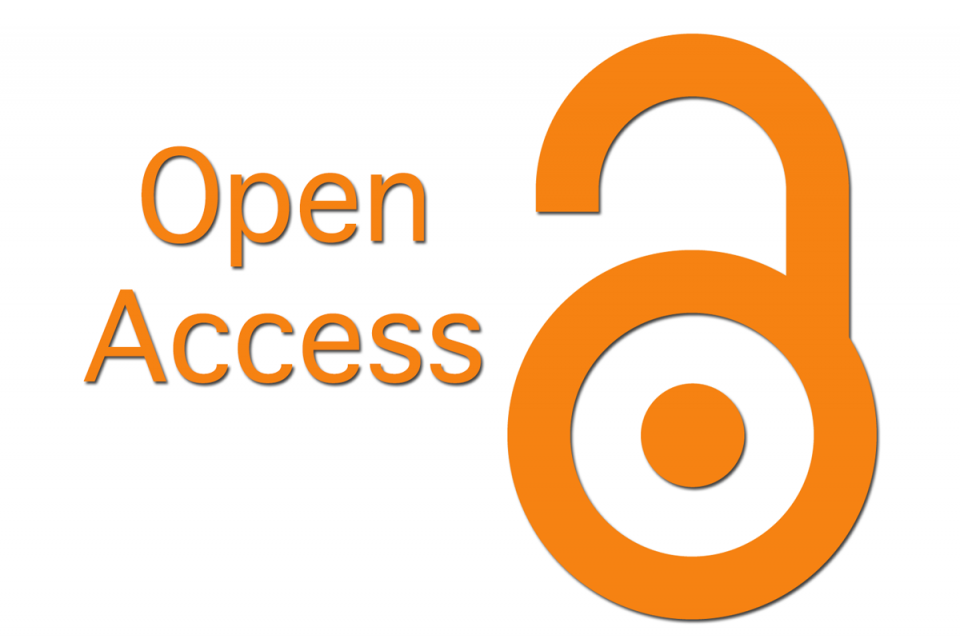Effects and feasibility of a supervised exercise program plus multimodal home-based exercises post-hospitalized COVID-19 individuals.
DOI:
https://doi.org/10.48047/CU/54/01/115-131Keywords:
Post Covid-19, Rehabilitation, Multimodal exercise programAbstract
Introduction: Exercise programs have been recommended to individuals with persistent symptoms after COVID-19 hospital discharge. Aim: The objective of this research was to analyze the effects and feasibility of an 8-week supervised high intensity endurance and strength training plus multimodal home-based exercise program on physical, functional outcomes, levels of anxiety and in individuals with persistent symptoms after COVID-19 hospital discharge. Methods: This non-randomized study with convenience sampling, included adults reporting muscle weakness, dyspnea, and/or fatigue after COVID-19 hospitalization, with significant limitations. Exercise program included supervised high-intensity resistance and strength training sessions, as well as multimodal home exercises. The assessed outcomes included pulmonary function (spirometry), exercise capacity (6MWT); functionality capacity (STS-1min) and Post-COVID Functional Scale (PCFS), handgrip strength (HGS) and one-repetition maximum (1RM), quality of life (SF-36); and levels of anxiety and depression (total HADS). Feasibility was achieved if 50% of the sample completed 90% of the sessions of the program. Results: After intervention, individuals improved FVC, FEV1, 6MWT, STS-1mim, HGS; 1RM, SF-36 and total HADS (P< 0.005 for all results). In addition, in PCFS, 100% of the individuals showed significant improvement after intervention compared with previous functional status p<0.0001. Study retention was 66% (22 of the 33 participants), mean adherence over the 8 weeks was 90%. No adverse events were reported. Conclusion: Supervised high intensity endurance and strength training plus multimodal home-based exercise improved the functional capacity, muscle strength, symptoms of anxiety, and functional status in post-hospitalized COVID-19 patients, demonstrated its application to be feasible and safe.
Downloads
References
Reinhardt ÉL. Transmissão da COVID-19: um breve reexame das vias de transmissão por gotículas e aerossóis. Revista Brasileira de Saúde Ocupacional. 2022;47.
Araya-Quintanilla F, Sepulveda-Loyola W, Cuyul-Vásquez I, Alvarez-Bustos A, Gutiérrez-Espinoza H, Suziane Probst V, et al. Recommendations and Effects of Rehabilitation Programs in Older Adults After Hospitalization for COVID-19. Am J Phys Med Rehabil. 2023 Jul;102(7):653–9.
Bonorino KC, Cani KC. Early mobilization in the time of COVID-19. Rev Bras Ter Intensiva. 2020;32(4).
De Lorenzo R, Conte C, Lanzani C, Benedetti F, Roveri L, Mazza MG, et al. Residual clinical damage after COVID-19: A retrospective and prospective observational cohort study. PLoS One. 2020 Oct 14;15(10):e0239570.
Chaabene H, Prieske O, Herz M, Moran J, Höhne J, Kliegl R, et al. Home-based exercise programmes improve physical fitness of healthy older adults: A PRISMA-compliant systematic review and meta-analysis with relevance for COVID-19. Ageing Res Rev. 2021 May;67:101265.
da Silva MMC, Viana DR, Colucci MG, Gonzaga LA, Arcuri JF, Frade MCM, et al. Effects of a cardiopulmonary telerehabilitation using functional exercises in individuals after COVID-19 hospital discharge: A randomized controlled trial. J Telemed Telecare. 2023 Aug 9;
Alberto C, Pereira C, Sato T, Rodrigues SC. Artigo Original Novos valores de referência para espirometria forçada em brasileiros adultos de raça branca* New reference values for forced spirometry in white adults in Brazil. Vol. 33, J Bras Pneumol. 2007.
Britto RR, Probst VS, Andrade AFD de, Samora GAR, Hernandes NA, Marinho PEM, et al. Reference equations for the six-minute walk distance based on a Brazilian multicenter study. Braz J Phys Ther. 2013 Dec;17(6):556–63.
Strassmann A, Steurer-Stey C, Lana KD, Zoller M, Turk AJ, Suter P, et al. Population-based reference values for the 1-min sit-to-stand test. Int J Public Health. 2013 Dec 24;58(6):949–53.
de Facio CA, Guimarães FS, da Cruz AGT, Bomfim RF, Miranda SRAP, Viana DR, et al. Post-COVID-19 functional status scale: Cross-cultural adaptation and measurement properties of the Brazilian Portuguese version. Braz J Phys Ther. 2023 May;27(3):100503.
Brown LE, Weir JP. ASEP procedures recommendation: accurate assessment of muscular strength and power. J Exerc Physiol Online. 2001;4(3):1–21.
Silva R de O e, Pereira JN, Milan EGP. Avaliação da qualidade de vida com o instrumento SF-36 durante a pandemia do COVID-19: Um estudo piloto. Research, Society and Development. 2021 Jul 19;10(9):e17110917596.
Mykletun A, Stordal E, Dahl AA. Hospital Anxiety and Depression (HAD) scale: Factor structure, item analyses and internal consistency in a large population. British Journal of Psychiatry. 2001 Dec 2;179(6):540–4.
Spruit MA, Singh SJ, Garvey C, Zu Wallack R, Nici L, Rochester C, et al. An official American thoracic society/European respiratory society statement: Key concepts and advances in pulmonary rehabilitation. Am J Respir Crit Care Med. 2013 Oct 15;188(8).
Hill K, Jenkins SC, Cecins N, Philippe DL, Hillman DR, Eastwood PR. Estimating Maximum Work Rate During Incremental Cycle Ergometry Testing From Six-Minute Walk Distance in Patients With Chronic Obstructive Pulmonary Disease. Arch Phys Med Rehabil. 2008 Sep;89(9):1782–7.
Lopez M, Bell K, Annaswamy T, Juengst S, Ifejika N. COVID-19 Guide for the Rehabilitation Clinician. Am J Phys Med Rehabil. 2020 Aug;99(8):669–73.
Daly RM, Gianoudis J, Hall T, Mundell NL, Maddison R. Feasibility, Usability, and Enjoyment of a Home-Based Exercise Program Delivered via an Exercise App for Musculoskeletal Health in Community-Dwelling Older Adults: Short-term Prospective Pilot Study. JMIR Mhealth Uhealth. 2021 Jan 13;9(1):e21094.
Cohen J. Statistical Power Analysis for the Behavioral Sciences. 2nd Edition. Routledge; 2013. 1–567 p.
Aul DR, Gates DJ, Draper DA, Dunleavy DA, Ruickbie DS, Meredith DH, et al. Complications after discharge with COVID-19 infection and risk factors associated with development of post-COVID pulmonary fibrosis. Respir Med. 2021 Nov;188:106602.
Ong KC. Pulmonary function and exercise capacity in survivors of severe acute respiratory syndrome. European Respiratory Journal. 2004 Sep 1;24(3):436–42.
Lei S, Li X, Xie Y, Li J. Clinical evidence for improving exercise tolerance and quality of life with pulmonary rehabilitation in patients with idiopathic pulmonary fibrosis: A systematic review and meta-analysis. Clin Rehabil. 2022 Aug 28;36(8):999–1015.
Liu K, Zhang W, Yang Y, Zhang J, Li Y, Chen Y. Respiratory rehabilitation in elderly patients with COVID-19: A randomized controlled study. Complement Ther Clin Pract. 2020 May;39:101166.
Curci C, Pisano F, Bonacci E, Camozzi DM, Ceravolo C, Bergonzi R, et al. Early rehabilitation in post-acute COVID-19 patients: data from an Italian COVID-19 Rehabilitation Unit and proposal of a treatment protocol. Eur J Phys Rehabil Med. 2020 Nov;56(5).
Ouellette N, Robertson J, Bellinger L. The Effectiveness of Physical, Occupational, and Speech Therapy in the Treatment of Patients with COVID-19. Arch Phys Med Rehabil. 2021 Oct;102(10):e36.
Asimakos A, Spetsioti S, Mavronasou A, Gounopoulos P, Siousioura D, Dima E, et al. Additive benefit of rehabilitation on physical status, symptoms and mental health after hospitalisation for severe COVID-19 pneumonia. BMJ Open Respir Res. 2023 Jun 29;10(1):e001377.
Dumitrescu A, Doros G, Lazureanu VE, Septimiu-Radu S, Bratosin F, Rosca O, et al. Post-Severe-COVID-19 Cardiopulmonary Rehabilitation: A Comprehensive Study on Patient Features and Recovery Dynamics in Correlation with Workout Intensity. J Clin Med. 2023 Jun 29;12(13):4390.
Jimeno-Almazán A, Pallarés JG, Buendía-Romero Á, Martínez-Cava A, Franco-López F, Sánchez-Alcaraz Martínez BJ, et al. Post-covid-19 syndrome and the potential benefits of exercise. Vol. 18, International Journal of Environmental Research and Public Health. MDPI AG; 2021.
Meléndez-Oliva E, Martínez-Pozas O, Cuenca-Zaldívar JN, Villafañe JH, Jiménez-Ortega L, Sánchez-Romero EA. Efficacy of Pulmonary Rehabilitation in Post-COVID-19: A Systematic Review and Meta-Analysis. Biomedicines. 2023 Aug 7;11(8):2213.
de Oliveira GN, Lessa JMK, Gonçalves AP, Portela EJ, Sander JW, Teixeira AL. Screening for depression in people with epilepsy: Comparative study among Neurological Disorders Depression Inventory for Epilepsy (NDDI-E), Hospital Anxiety and Depression Scale Depression Subscale (HADS-D), and Beck Depression Inventory (BDI). Epilepsy & Behavior. 2014 May;34:50–4.
Damiano RF, Caruso MJG, Cincoto AV, de Almeida Rocca CC, de Pádua Serafim A, Bacchi P, et al. Post-COVID-19 psychiatric and cognitive morbidity: Preliminary findings from a Brazilian cohort study. Gen Hosp Psychiatry. 2022 Mar;75:38–45.
Downloads
Published
Issue
Section
License
Copyright (c) 2025 Walter Sepulveda Loyola, Jordana Cordeiro Maluf, Aline Gil Panont, Lorena Bezerra, Vanessa Suziane Probst (Author)

This work is licensed under a Creative Commons Attribution 4.0 International License.
You are free to:
- Share — copy and redistribute the material in any medium or format for any purpose, even commercially.
- Adapt — remix, transform, and build upon the material for any purpose, even commercially.
- The licensor cannot revoke these freedoms as long as you follow the license terms.
Under the following terms:
- Attribution — You must give appropriate credit , provide a link to the license, and indicate if changes were made . You may do so in any reasonable manner, but not in any way that suggests the licensor endorses you or your use.
- No additional restrictions — You may not apply legal terms or technological measures that legally restrict others from doing anything the license permits.
Notices:
You do not have to comply with the license for elements of the material in the public domain or where your use is permitted by an applicable exception or limitation .
No warranties are given. The license may not give you all of the permissions necessary for your intended use. For example, other rights such as publicity, privacy, or moral rights may limit how you use the material.








